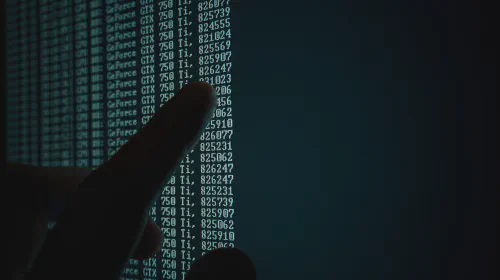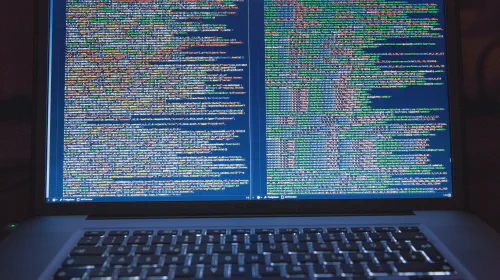DeFi Tokens vs. Coins - What is the Difference?
Salomon Kisters
Jun 1, 2022This post may contain affiliate links. If you use these links to buy something we may earn a commission. Thanks!
NFTs, blockchain, alt-coins, and stablecoins - in the emerging world of cryptocurrency, constant breakthroughs are the new norm. With technologies and systems advancing almost every day, these terms can get pretty confusing to the average internet user.
Whether you are new to the crypto world or you have already invested millions, there’s still a lot to learn in this fast-paced industry.
Why Was DeFi Created?
Unlike banks and other financial institutions, which act as middlemen in managing your money, DeFi, or decentralized finance, is an up-and-coming financial technology that can help remove this go-between broker.
The world is already familiar with centralized cryptocurrency exchanges such as Binance, Coinbase, Kraken, etc., which help users exchange their fiat currency (like the US dollar, British Pound, and Euro) for a cryptocurrency, the most popular being Bitcoin and Ethereum as they are considered the safest and most stable bets an investor can make.
However, these platforms may charge high trading fees and might even be unsafe as they are prone to hacking. Another downside of using centralized exchanges is that transactions take time to process, which can sometimes be detrimental in the volatile world of crypto.
What are Smart Contracts?
DeFi operates on the Ethereum blockchain off of smart contracts, which are specific sets of code that can automatically execute the intended function, such as facilitating and carrying out transactions. These allow a safe and reliable method of transaction processing because every action is carried out by the blockchain instead of a third party, which may be prone to hacking or fraud.
These contracts allow for anyone to exchange currencies or goods, with no authority allowed to change its rules, as all of them are written by and maintained by the code. This is also in sharp contrast to fiat money, in which governments can manipulate the value of the currency, which may end up hurting your bank account.
Smart contracts have opened the doors of DeFi and now include services such as loans, insurance, and lending, which allow access to those who may have been denied financial services before due to the presence of a dominant central authority (such as banks or government institutions).
These services are now faster, efficient, and open to inspection by anyone as they are on a public ledger, all while allowing complete anonymity.
Understanding What Coins and Tokens Are
DeFi coins are similar to fiat currency, as they both appear on the blockchain - which provides a record accessible to everyone. But also because each coin holds a certain value and can be traded for a specific good. Although the two are very similar, a token is slightly different because it can be considered more of an asset.
Think of coins like a $100 bill and a token like a house. The $100 bill has a certain value, whereas the value of a token can go up or down depending on different circumstances.
To put it simply, we know that tokens represent assets. These can include real-world items such as property deeds, articles, legal documents, and tickets. It could also include digital art such as GIFs, music, videos, and images. Nowadays, all of these (especially digital art) have been popularized and are generally known as NFTs (non-fungible tokens).
The demand for NFTs is exponentially increasing, with new artists from around the world showcasing their work and selling it to buyers and investors. One of the most famous examples is the Bored Ape Yacht Club project, where 1 of 10,000 NFTs can set you back roughly $400,000.
Just to show how successful these projects can be, Bored Ape Yacht Club, which is currently one of the most popular NFT projects, has passed $2 billion in sales due to its artistic vision and celebrity endorsement. Another example is Jack Dorsey (the founder of Twitter) selling his first tweet as an NFT for $2.9 million on auction.
You might be thinking, how can I own an image online that’s there for everyone to see? Going back to the house analogy, we know that people passing by your house can see it, take photos of it, and claim it’s theirs.
However, you own all the rights to it, and it is under your name. Ultimately, only you have its ownership and can choose to sell it if you so desire.
Similarly, the blockchain records all transactions, and although the asset (NFT) itself isn’t stored on the blockchain, it does store the proof of ownership. The physical asset can be stored anywhere, with many people saving it in secure cold-storage hardware wallets, which are often offline as that provides an added layer of protection away from cyber-attacks.
So yes, although anyone may be able to see, save, and use your NFT, it will nevertheless be yours. It’s sort of like collecting art.
These tokens are often traded through Ethereum on online marketplaces, with a similar style to websites like eBay. Currently, the most popular NFT trading marketplace is OpenSea.io which displays a variety of NFT projects such as art pieces, music, tokenized items, etc.
Many people choose to collect these NFTs as passion projects or to see them as investments; whatever the case, the market remains highly volatile with projects crashing and losing nearly all their value, such as Jack Dorsey’s famous tweet which only received a bid of $280 during its last auction.
What are Coins?
Bitcoin, which was the first coin to take off, was invented by Satoshi Nakomoto to replace traditional currency and provide an authority-free method of exchanging money.
Coins often operate on their own blockchain. For example, if I purchase an item with Bitcoin, the transaction will be stored on the Bitcoin blockchain. If that same item is sold for Dogecoin, it will be recorded on the Dogecoin blockchain. However, tokens (such as NFTs) often rely on the blockchain of other currencies.
The main purpose of DeFi coins is to act as an alternative to money. This means that they can be used to purchase items not only in the cryptocurrency world but also to purchase items on websites like Amazon, Tesla, Microsoft, and Twitch. Some companies have even offered to pay their employees in Bitcoin as more and more young employees see this as a smarter and more stable option for the future.
Tokens, on the other hand, are not exchangeable and can also be sold for coins.
Recently, El Salvador has included Bitcoin as its national currency alongside the US Dollar, as it will make the process of transactions much easier in a country where 70% of the population does not have access to a bank account.
Another interesting fact about coins is that they can be mined. Similar to how the central bank of any government controls how much money is printed, crypto coins can also be ‘printed’ through a process known as mining. This process is controlled entirely by the public.
But don’t get your hopes up. Mining isn’t as simple as it seems. This process requires a computer with advanced hardware to solve extremely complicated computations. Once these computations are solved, the miner receives his reward in the form of Bitcoin.
However, this process can often be very long and painful, not to mention expensive. But it helps add more Bitcoin to the circulation. Hence, these miners are very important to the overall crypto ecosystem.
Risks Involved in DeFi
Like any investment, DeFi comes with its fair share of risks. But greater risk means greater reward, right?
DeFi is still a relatively new concept, which means the industry is far from perfect, and there may be bugs that hackers and cyber-attackers could take advantage of. Software is only as good as the people who coded it, and sometimes errors in this coding can cause huge losses.
A common scam includes ‘DeFi rug pulls.’ As the name suggests, imagine standing on a rug with all your money, and somebody pulls it from under you, causing you to fall over. Although the DeFi space is relatively safe, there are no regulations that have been put into place.
This means that many DeFi developers can code certain things into their smart contract, which allows them to take all the money that’s been invested into their project, and sell it off, essentially stealing your money!
Software issues and bugs in websites that allow you to lend and borrow crypto can often be vulnerable and lead to hackers taking advantage and stealing money from the transaction.
Alchemix was one lending protocol website that fell short and ended up allowing borrowers to reclaim loan collateral (assets such as cars, houses, cryptocurrency, and NFTs that can be taken in case the borrower isn’t able to pay the loan back) worth $6.5 million without repaying their loans.
Why DeFi is the Future
DeFi applications are the future of finance and despite the risks and drawbacks just mentioned, it ultimately opens up thousands of possibilities that give millions of people around the world access to basic financial services, free from the prejudices that can be seen in our current financial system.
Stay informed with the latest insights in Crypto, Blockchain, and Cyber-Security! Subscribe to our newsletter now to receive exclusive updates, expert analyses, and current developments directly to your inbox. Don't miss the opportunity to expand your knowledge and stay up-to-date.
Love what you're reading? Subscribe for top stories in Crypto, Blockchain, and Cyber-Security. Stay informed with exclusive updates.
Please note that the Content may have been generated with the Help of AI. The editorial content of OriginStamp AG does not constitute a recommendation for investment or purchase advice. In principle, an investment can also lead to a total loss. Therefore, please seek advice before making an investment decision.

How Many Consensus Algorithms Are There? An Overview
Proof of Work is just one of many consensus algorithms out there. But how many are there?

How to View the Activity of a Bitcoin Address
In this article, we'll guide you on how to check the activity of your bitcoin address so that you can monitor transactions across the blockchain. Let's go.

Blockchain Confirmations: Understanding Their Importance
Blockchain confirmations are the number of blocks added after a transaction, ensuring its permanence and security on the blockchain.
Protect your documents
Your gateway to unforgeable data. Imprint the authenticity of your information with our blockchain timestamp